Who won and who lost in last weekend’s elections for the European Parliament? Brookings experts weigh in.
The results of the European Parliament election are in and the biggest winner might be European democracy and the Parliament’s democratic legitimacy. Turnout surged from 42.6 percent five years ago to 50.5 percent, the first increase in turnout in the Parliament’s 40-year history despite the increasing power of the institution in European Union policymaking. Moreover, the fact that Europe was one of the dominant issues in the elections meant they were more than just a series of votes on domestic issues. They were truly European. But the outcome will deepen uncertainty about the future direction of the EU.

As expected, the results showed the pro-EU center holding with about two-thirds of the 751 seats, but also fragmenting. The traditional center-right and center-left party groups lost nearly 80 seats, while the liberals (including French President Emmanuel Macron’s En Marche) and the greens gained more than 50. The greens outperformed the most recent polls, while the further-left bloc underperformed. Meanwhile the populists and nationalists are here to stay. Italian Interior Minister Matteo Salvini’s League, the third largest party overall, will lead a strengthened hard-right bloc constituting one-tenth of the Parliament. In France, the anti-European National Rally Party, led by Marine Le Pen, narrowly defeated President Emanuel Macron’s La République En Marche.

The action now moves to intergovernmental negotiations over the future leadership of the European Commission and other institutions, with the liberals vocally opposing European People’s Party candidate Manfred Weber’s claim to the commission presidency as the winner of the Spitzenkandidat process (in which the party groups nominate candidates who engage in debates). Leaders are meeting in Brussels tonight, but the decisionmaking could be drawn out, with the incompleteness of Brexit adding a fly to the ointment.
The results will also have reverberations in national politics. British Prime Minister Theresa May announced she would resign the Conservative Party’s leadership on June 7 before the results had even been declared, and Greek Prime Minister Alexis Tsipras has announced snap elections in July following his party’s loss to the opposition. Most significant is the possibility that the German Social Democrats’ poor results could lead to the fall of the government of the EU’s biggest country. – Ted Reinert (@tedreinert), Senior Research Assistant in the Center for the United States and Europe and Thomas Wright (@thomaswright08), Director of the Center on the United States and Europe
Germany:
The Germany that looked into the mirror of Sunday’s EU elections is a deeply unsettled country, uncertain not just of its national priorities and politics, but also of its role in Europe. In a vote that saw a record turnout of over 60 percent, the two major parties—the center-right Christian Democrats (CDU) and the center-left Social Democrats (SPD)—suffered crushing losses: The CDU won 29 percent of the vote (more than six percentage points less than in the last EU-wide poll in 2014), the SPD came in third with 16 percent, more than 11 percentage points down). Even more humiliatingly for the Social Democrats, they lost a 73-year bastion in the city state of Bremen to the CDU. The two other parties with deep roots in German postwar politics—the liberal Free Democratic Party (FDP) and Die Linke (the successor party to the East German Communist Party)—each received less than six percent of the vote.

In an election in which nearly half of voters who participated in exit polls said their top concern was climate change (a 28 percentage point jump from five years ago), the unquestioned winners are the Greens, now in second place nationally with 20.5 percent (a nearly 10 percentage point increase). More than a million voters defected to the Greens from both the CDU and the SPD, cementing their arrival in the middle of the political spectrum. In the 16-34 age bracket, a whopping 34 percent voted for the Greens.
The hard-right Alternative for Germany (AfD) gained 11 percent of the vote, below its national election result of 12.6 percent in 2017, and only a four percentage point increase over 2014, despite the intervening refugee crisis. Yet the appearance of a nationwide plateau is deceptive: The AfD came in first in the Eastern Länder of Brandenburg and Saxony, and second in Saxony-Anhalt and Thuringia. It also did very well in a number of Eastern local elections.
The three women who currently hold the fate of German national politics in their hands suddenly find themselves in a firestorm: chancellor Angela Merkel, CDU leader Annegret Kramp-Karrenbauer (“AKK”), and SPD head Andrea Nahles. Nahles has announced she will hold a confidence vote next week, testing whether the snipers in her party have the courage to stand against her. Meanwhile, Merkel and AKK, who had been engaged in a historically unprecedented coordinated handover of power, now appear to be in a struggle for control over the party.
Yet more tests await: Can Merkel impose German candidates for the EU’s top jobs, like the European Commission presidency Spitzenkandidat Manfred Weber, or Jens Weidmann for the European Central Bank? Can the traditional parties persuade a skeptical and increasingly vocal younger electorate—as evinced in the FridaysForFuture demonstration and the dramatic impact of an hour-long harangue by a blue-haired 26-year-old YouTuber called Rezo—that they have answers for urgent problems like the digitalization backlog and climate change? Are the Greens, who seem genuinely startled by their meteoric ascendance, prepared to join the next national government? And finally, can the parties that represent Germany’s liberal constitutional tradition break the dominance of the AfD in three key Länder elections (in Brandenburg, Saxony, and Thuringia) in the fall? – Constanze Stelzenmüller (@ConStelz), Robert Bosch Senior Fellow in the Center on the United States and Europe
France:
As polls predicted, Marine Le Pen’s far-right National Rally (RN), which promotes a sovereigntist alternative to EU integration, won first place in France with 23.3 percent of the vote, almost reaching its 2014 levels with high gains among millennials. Closely behind, President Emmanuel Macron’s La République En Marche (LREM) held up reasonably well after six months of Yellow Vests street protests, at 22.4 percent. Both Le Pen and Macron made this election a referendum on each other, over-dramatizing the stakes, framing the vote as a clash between “patriots and globalists” or “nationalists and progressives.”
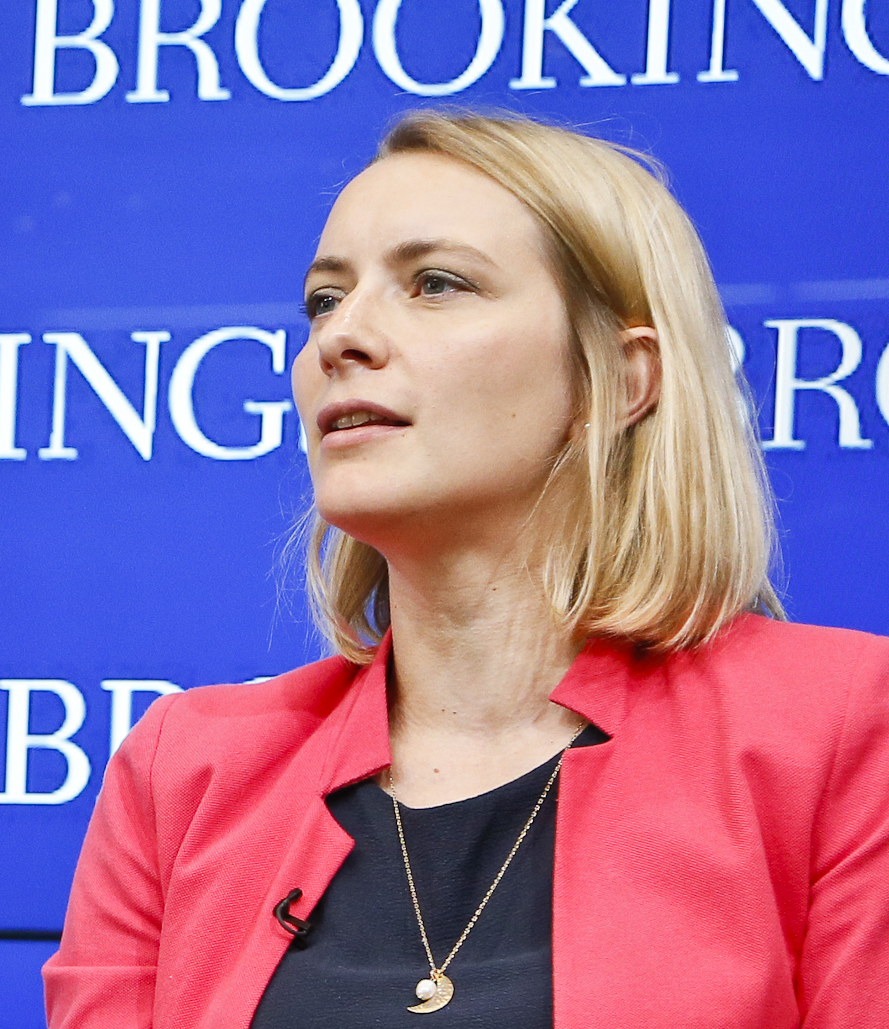
Yet, together RN and LREM only got 45 percent of the vote. A majority of the French chose to escape the dichotomy promoted by the two parties. Traditional left and right parties fell to single digit performances (8.5 percent for Les Républicains, 6.2 percent for the Socialists), as Macron sucked up all the air for liberal centrism. A surprising strong voice emerged nevertheless with the success of the Greens (13.5 percent), who doubled polling expectations, attracting one-sixth of 2017 Macron voters. The surge demonstrates the strength of the ecological movement in France—and beyond, as greens made considerable gains in Germany, Portugal, and Ireland, as well.
More worrisome, 17 percent of the French decided to give their votes to marginal parties with little chance at any representation as they fail to reach the 5 percent electoral threshold (such as sovereigntist Debout la France, leftist Génération.s, the Communist Party, the Parti animaliste, and 12 others). This number has doubled in 20 years (8.8 percent in 1999), demonstrating an evolution towards tailor-made politics which fails to seek broad consensus or unite the country.
In a fragmented political landscape, President Macron will continue to refine his party brand. Knowing that vote reserves now lie on the left, he might choose to embrace the ecological cause further (his last minute campaign attempt at it felt forced). However, he has now aligned himself squarely with the center-right apparatus and political logic, and will most probably consolidate his party as the center-right liberal opposition to the far-right. This will continue to leave political space on the left for a potential third voice. – Célia Belin (@celiabelin), Visiting Fellow in the Center on the United States and Europe
Italy:
With 34 percent of the vote, Matteo Salvini’s League won 28 seats in the new European Parliament, up from five seats five years ago, and established itself as Italy’s largest party. The League doubled its total from last year’s national elections at the expense of its coalition ally, the Five Star Movement (M5S), which scored 17 percent and won 14 seats—three fewer than five years ago. Particularly penalized by the low turnout in the southern regions of Italy, the Five Star Movement also suffered from the revitalization of the center-left Democratic Party, which scored a little over 22 percent.

This vote indicates that Italian voters are very discouraged with the European Union as it is, and that those who cared enough to go and vote clearly opted for a sovereigntist vision of Europe. On the domestic level, there are at least two main considerations: 1) by forming a government with Salvini, the M5S gave Salvini a platform to campaign from a strong position and eventually managed to overshadow M5S; 2) the League’s undisputable success raises the question of how long its alliance with M5S is going to last.
It is true that if tomorrow Italians had to vote in national elections, the League would have the numbers to form its own government partnering up with Fratelli d’Italia, another far-right formation that repeatedly backed Salvini and that also collected many more votes than in the past European elections (over 6 percent).
At the same time, it might not be really convenient for Salvini to induce a government crisis. If that was the case, President of the Republic Sergio Mattarella would have to hold consultations and explore the availability of an alternative government with the existing parliament (where the Five Star Movement has 32 percent of seats). This would mean that Mattarella would explore the chance of a M5S and Democratic Party coalition that would put Salvini in opposition; in such a scenario, the left would stand at a crossroads: either allying with M5S, or handing the country to the far right.
For now, the League will keep the government as it is, exploiting the political capital emerging from the European elections to push forward its own interests, and eventually blaming M5S in case anything goes wrong. – Giovanna De Maio (@giovDM), Visiting Fellow in the Center on the United States and Europe
Hungary and Poland:
In Hungary and Poland, voters turned out in record numbers to endorse the “illiberal democracy” championed by those countries’ leaders. The results highlight the firm grip of these euroskeptic, authoritarian regimes on voters, driven by appeals to nationalism and aided by the increasingly limited space for opposition, independent media, and civil society.

Fidesz, Prime Minister Viktor Orbán’s party, won 53 percent of the vote in Hungary on the back of the largest electoral turnout in the country’s post-Cold War history. Poland’s Law and Justice (PiS) clocked 46 percent of the vote. It was the best result for any Polish political party since 1989 and will make PiS the fourth-largest national party in the European Parliament.
In both countries, the elections dealt serious blows to opposition efforts to find messages and build coalitions that would allow them to challenge the ruling parties. In Poland, the newly formed European Coalition, a pro-EU opposition umbrella group, won 37 percent of the vote, signaling that it will likely need to retool its leadership and messaging if it hopes to compete with PiS in national elections in the fall.
In the European Parliament, Fidesz remains a member (though suspended due to rule of law concerns) of the center-right European People’s Party, which lost seats but retains its status as the largest parliamentary group. PiS leads the European Conservatives and Reformists, a more euroskeptic group it founded with Britain’s Conservatives, which will be the sixth-largest in the Parliament. However, both parties’ relations with the new Europe of Nations and Freedom group led by Matteo Salvini bear watching, given Salvini’s aspiration to unify right-wing populists around a common agenda.
Fidesz’s and PiS’s dominance at the polls will also embolden Hungary’s and Poland’s defiant stance toward the European Commission on issues ranging from migration to judicial independence, raising renewed questions about the EU’s inability under current voting rules to discipline member states that do not comply with EU laws, values, and principles. – Molly Montgomery (@MollyMontgomery), Nonresident Fellow in the Center on the United States and Europe
The United Kingdom:
British elections to the European Parliament were never supposed to happen, following the country’s June 2016 decision to leave the European Union. Yet as part of the extended Brexit deadline negotiated by EU leaders in early April, Britain was required to hold polls. Brexit was the only issue on voters’ minds, with the results reflecting deepening polarization. Turnout was 37 percent, the second highest in any European election in the U.K.

The big winner with 32 percent of the vote was the Brexit Party, formed four months ago by Nigel Farage. As a Member of the European Parliament for 20 years with the right-wing and euro-skeptic United Kingdom Independence Party (UKIP), he has long advocated ending Britain’s political relationship with Europe and focusing solely on trade relations. His campaign message was clear: The U.K. should leave the EU by the October 31 deadline, with or without a deal. (UKIP did not win any seats.) The other victor was the Liberal Democrat Party, whose simple campaign slogan—“Bollocks to Brexit”—earned the party second place with 20 percent of the vote and its best-ever European election result. The Green Party, which also supported continued EU membership, increased its vote total and placed fourth.
At the other end of the spectrum, voters punished establishment parties with ambiguous positions on Brexit. The Conservatives saw their worst national election result in almost 200 years, finishing in fifth place after failing to deliver Brexit. Labour finished third, penalized for its confusing stance toward Brexit—particularly the question of a second referendum. The party was wiped out in Scotland, where the Scottish National Party gained a third seat. Change UK, a party recently formed by disillusioned Labour and Tory Members of Parliament supporting a second Brexit referendum, failed to win any seats. In Northern Ireland, women won all three seats, with votes for a hardline unionist, a hardline nationalist, and notably a member of the cross-community Alliance Party. – Amanda Sloat (@A_Sloat), Robert Bosch Senior Fellow in the Center on the United States and Europe



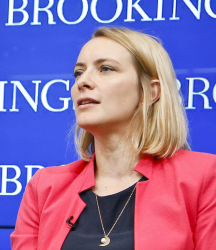



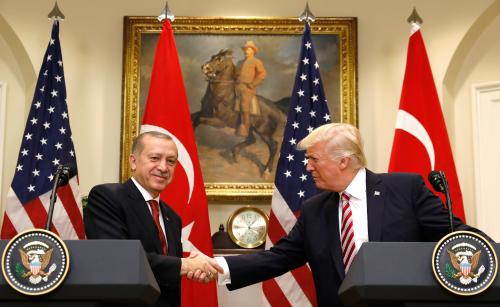
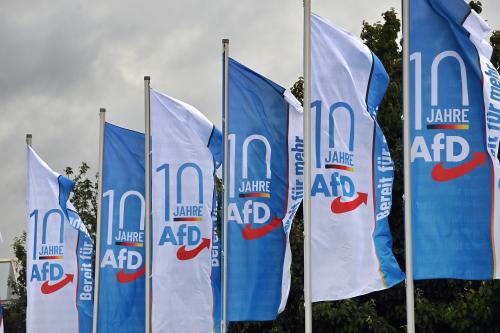
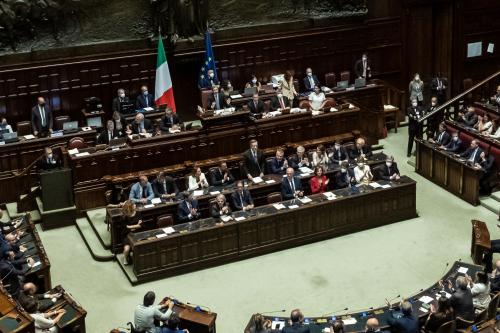
Commentary
Around the halls: Brookings experts analyze the European Parliament election results
May 28, 2019